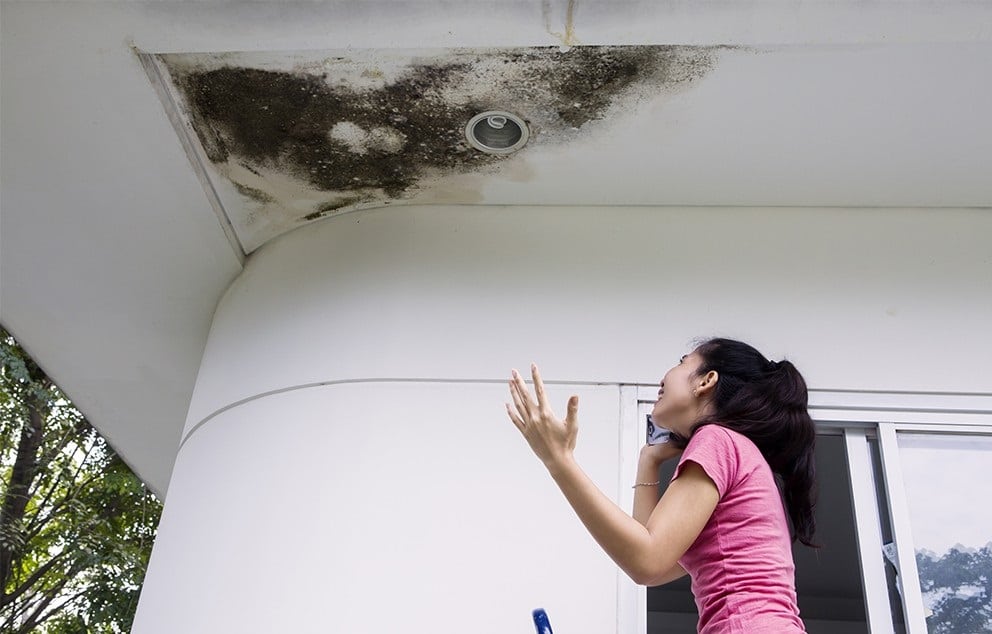A well-maintained ceiling is essential for the structural integrity and aesthetic appeal of any home or building. However, issues such as ceiling leaks can arise, posing potential dangers and requiring immediate attention. In this article, we will explore the concept of ceiling repair, discuss the dangers associated with a ceiling leak, highlight the benefits of timely ceiling repair, explain why it is crucial to hire a professional for such repairs, delve into factors to consider before hiring a ceiling repair specialist, and identify common reasons why ceiling leaks occur.
Understanding Ceiling Repair
Ceiling repair refers to the process of restoring and fixing damaged ceilings. From minor cracks and water stains to more severe issues like sagging or collapsing sections, ceiling repair aims to address these problems and restore the ceiling’s structural integrity and appearance. Timely ceiling repair ensures that your home remains safe and free from potential hazards.
The Dangers of a Ceiling Leak
A ceiling leak is one of the most common issues that homeowners may encounter. Ignoring a ceiling leak can lead to various dangers:
Structural Damage: A ceiling leak can weaken the overall structure of your home, compromising its stability and safety.
Mold and Mildew Growth: Excess moisture from a ceiling leak can create an ideal environment for mold and mildew growth. These fungi pose serious health risks, especially for those with respiratory conditions or allergies.
Electrical Hazards: If water comes into contact with electrical wiring or fixtures in the ceiling, it can cause short circuits, power outages, or even electrical fires.
Health Risks: The presence of mold, mildew, and dampness resulting from a ceiling leak can trigger respiratory issues, allergies, and other health problems for occupants.
Aesthetic Damage: A ceiling leak can leave unsightly water stains, discoloration, and damage to the paint or wallpaper, negatively impacting the aesthetics of your living space.
Benefits of Ceiling Repair
Maintains Structural Integrity: Timely ceiling repair ensures that any existing damage is promptly addressed, preventing further deterioration and maintaining the structural integrity of your home.
Prevents Mold and Mildew: By repairing a ceiling leak, you eliminate excess moisture that promotes mold and mildew growth, safeguarding your home and protecting the health of its occupants.
Enhances Safety: Ceiling repair eliminates potential hazards such as weakened structures, electrical issues, and the risk of ceiling collapses, ensuring the safety of everyone in the house.
Preserves Aesthetic Appeal: Repairing a damaged ceiling restores its appearance, eliminating unsightly stains, cracks, and other visible signs of damage, enhancing the visual appeal of your living space.
Increases Property Value: A well-maintained ceiling adds value to your property, making it more attractive to potential buyers should you decide to sell in the future.
Why Hire a Ceiling Repair Professional
When it comes to ceiling repair, it is crucial to hire a professional for the following reasons:
Expertise and Experience: Ceiling repair professionals possess the necessary knowledge and skills acquired through training and hands-on experience. They can accurately assess the extent of the damage and employ appropriate repair techniques.
Safety Measures: Professionals have the necessary tools, equipment, and protective gear to perform ceiling repairs safely. They are familiar with safety protocols and can mitigate risks associated with working at heights and handling potentially hazardous materials.
Quality Workmanship: Hiring a professional ensures that the ceiling repair work is conducted to high standards, resulting in long-lasting and reliable repairs.
Time and Cost Savings: Professionals can complete the repair job efficiently, saving you time and effort. Additionally, their expertise helps avoid costly mistakes that may arise from DIY attempts or inadequate repairs.
Factors to Consider Before Hiring a Ceiling Repair Specialist
License and Insurance: Ensure that the ceiling repair specialist is licensed and properly insured to protect yourself from liability in case of accidents or property damage during the repair process.
Experience and References: Assess the experience level of the specialist by checking their portfolio and asking for references from previous clients. This will give you confidence in their ability to handle your specific repair needs.
Scope of Services: Determine if the specialist offers a comprehensive range of ceiling repair services, including addressing different types of damage and employing various repair techniques.
Pricing and Quotations: Obtain detailed quotations from multiple specialists and compare them to ensure a fair and competitive price for the repair work.
Reputation and Reviews: Research online reviews and testimonials from other clients to gauge the specialist’s reputation and the quality of their work.
Common Reasons for Ceiling Leaks
Ceiling leaks can occur due to several reasons, including:
Common Reasons for Ceiling Leaks
Roofing Issues: One of the primary causes of ceiling leaks is problems with the roof. Damaged or missing roof shingles, cracks in the roof tiles, or worn-out roofing materials can allow water to seep into the ceiling and cause leaks.
Plumbing Leaks: Faulty plumbing systems can lead to ceiling leaks. Issues such as burst pipes, leaking faucets, or damaged plumbing fixtures can result in water leakage that eventually finds its way into the ceiling.
Condensation: Excessive condensation can lead to moisture buildup in the ceiling, which can eventually cause leaks. Poor ventilation, high humidity levels, or inadequate insulation can contribute to condensation-related ceiling leaks.
Structural Damage: Any structural damage to the building, such as cracks or gaps in the walls or foundation, can allow water to infiltrate the ceiling and cause leaks.
Clogged Gutters: When gutters become clogged with debris, rainwater cannot flow properly, causing it to overflow and potentially seep into the ceiling. This can lead to water damage and leaks.
HVAC Issues: Problems with heating, ventilation, and air conditioning (HVAC) systems can also cause ceiling leaks. Condensation from malfunctioning HVAC units or blocked drainage pipes can result in water accumulation and subsequent ceiling damage.
Improper Installation or Maintenance: Poor installation of plumbing systems, roofing materials, or improper maintenance practices can contribute to ceiling leaks over time. It is essential to ensure that these systems are installed correctly and regularly inspected and maintained.
Natural Disasters: Severe weather events, such as heavy rainfall, storms, or hurricanes, can cause significant roof damage and lead to ceiling leaks.
Identifying the underlying cause of a ceiling leak is crucial for effective repairs. If you notice signs of a ceiling leak, such as water stains, discoloration, or dripping water, it is important to take immediate action and consult a professional ceiling repair specialist to address the issue promptly.

Paul Petersen is a seasoned home improvement expert and DIY enthusiast with over 20 years of experience in the industry. He began his career as a carpenter, honing his skills in woodworking and structural design. Over the years, Paul expanded his expertise to encompass a wide range of home renovation projects, from kitchen remodels to landscape design.

